After wading through the viscera of my last post, I thought I’d spare us all and write about something a little more fun this week.
I once did Christmas with the kids where we made all our gifts. It was not twinkly lights and the sound of chestnuts roasting on an open fire while we wove lattice baskets and sang in close harmony. It was me losing my mind because I was tasked with finishing every gift they got bored of making (all of them), forcibly stopping them eating all the sweets and paying out £9 million in crafting supplies. It would have been cheaper and less mentally taxing just to cave and buy everyone a Faberge egg and a suite at the Bellagio.
Since that time I have eschewed festive crafting with a firm hand. Instead I spend weeks trawling the charity shops with an eye for gifting treasure. I need no excuses, to be fair. I cannot pass a charity shop without wandering in. You just never know what you’re going to find.
The problem with this kind of shopping is that while I find things for other people, I also find things for myself. I inevitably come home with something, because in the thrifting game, he who hesitates is lost. There will not be any more of ‘these’, so if you see something wonderful, and you can afford it, you need to get it there and then.
Consequently I’ve done surprisingly well for myself in recent weeks, treasure wise. I thought I’d show you some of the things I’ve found in recent months, with a particular focus on arty things and some of my top treasure hunting tips.
Charity shops are brilliant places to find art. I went to this Hockney exhibition back in the day and kicked myself that I didn’t buy a poster. I only had to wait seven years for two of them to turn up, and they were framed, which saved me a fortune.
Patience is a virtue. The thing you dream of usually turns up eventually. I have a wish list and the only two things I haven’t found yet are a Faberge egg and a piece by Alexander McQueen.
Always look at the ramshackle box of frames. Sometimes they’re not just frames. Sometimes they have art in them and some of it can be wonderful.
Also, just buying nice frames from charity shops is a win. Framing is horrendously expensive. I often take the dimensions of things I need framing and note them on my phone. I also go everywhere with a tape measure in my bag for just such instances.
This painting was rolled up in a bucket full of rolls of wallpaper and wrapping paper. Always dig around in the rolls of posters/wrapping and undo them to get a proper look. For every ninety Paw Patrol posters, there will be something wonderful like this.
Take the time to look at everything. People who work in charity shops are volunteers and unless they work somewhere like Oxfam, where they employ specialists and valuers, everything is guesswork. I’ve found all kinds of treasure in the wrong places. This was behind a plastic elephant in the children’s toy section of one shop.
Even if you don’t entirely know what something is, if you like it and you can afford it, go for it. You can always gift it on or send it back to a charity shop if you fall out of love with it or realise you’ve bought something unspeakable. This, by the way, is not unspeakable, but it is mysterious. It’s a copy of the Hypatia plate from Judy Chicago’s iconic Dinner Party, printed on a 14 inch black leather disc. It was wedged behind a Screw Fix mug and covered in dust. On the back it says Limited Edition by Barneys of New York. I thought it was a place mat but it has integrated velcro strips on the back. Maybe it’s a space place mat. I can’t find anything else out about it, but I love it and it’s a keeper.
Do your homework. I spend a lot of my time drifting round art galleries, home ware shops and antique fairs. I’m nosey about everything. If I see something I like and I can’t afford it, I make notes and do research so that on the day I find it in a charity shop, I won’t miss out. This is a ceramic jar from the Danish, Nymolle studio. It’s decorated by Bjorn Wiinblad, whose work I love.
Learn about how things are made. This is a tiny glass vase I found on a shelf with a bunch of other, tiny glass vases. This one was different to all the others because it had something called a pontil mark on the base. This means that this vase was hand rather than factory made. The pontil mark is the point where the blown glass is broken away from the punti or glass blowing pipe. It’s like a little glass navel. This piece was also signed on the bottom. I borrowed a jeweller’s loupe to see if I could figure it out, but I couldn’t. Nevertheless, both these things are a sign of quality, so I bought it home.
Every thing that is made well has a story about how it’s made and the person who made it. Whether it’s the signature on a painting, a pontil mark or the hand rolled and stitched hem of a silk scarf, these are the marks of care, quality and love.
Art is not just paintings. This is a piece of fabric I found when I was looking for something completely different, rooting around in a basket of textile scraps. I loved it instantly, but when I folded it out for a better look I saw that it had the selvedge intact. This is the woven end of fabric that stops it from fraying. In certain quality fabric houses, the selvedge will have the details of the fabric colour way and design woven into it. This turned out to be the Elephant design for Heals’ department store by Neil Bradburn from 1974. A little bit more digging told me that the V&A have a sample of this in a different colour way in their archives.
Let’s treat ourselves to something a little festive. These are hand painted, ceramic Delft baubles. I usually prefer my Delft ware with a more contemporary slant. The extraordinarily rude designs of Paul Bommer are my dream, but until I either win the lottery or find one in a very liberal minded charity shop, these hand painted beauties will suffice.
Set a budget you’re comfortable with and stick to it. There have been a handful of times over the years when I knew something outside of my budget was worth paying and went for it, but otherwise if I pay over a tenner for anything I really, really have to love it beyond reason. Lucky for me, these Moomin mugs were £9 each so this was an easy decision.
I thought this miniature pigeon might be a ‘real’ painting. When I got it home and took it out the frame, it was just a really well framed artist’s business card. I love it anyway and it cost me an entire £3, so I wasn’t sad, but there are times when you will make mistakes in buying. It’s inevitable. My rule of thumb is to buy things I love even if they turn out to be worthless to anyone else but me.
Finally, if you’re thinking of buying to sell things, make sure you’ve done your research and know your market before you fill your house with things. Even if you have a great eye and know what you’re doing, you can still spend a long time waiting to sell something for the right price, so being prepared to store things is key. My rule for buying, even if I think I might want to sell it later, is to only buy things I like so that if I do end up passing it on the stairs every day for five years before it sells, I won’t regret my life choices.




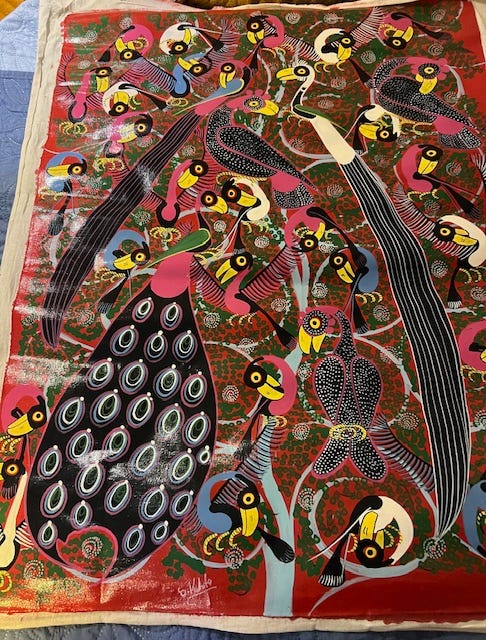
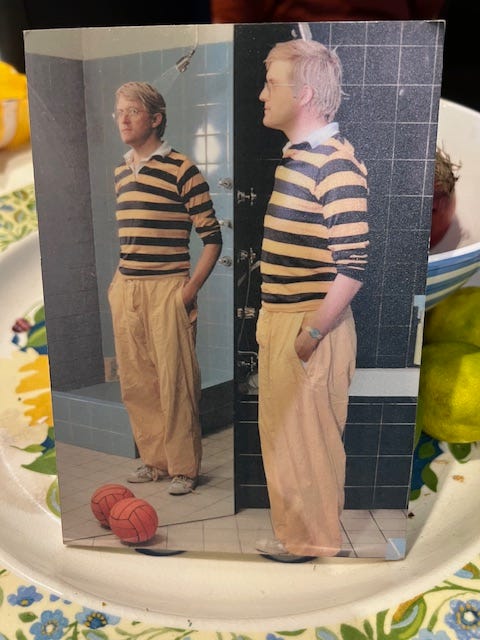
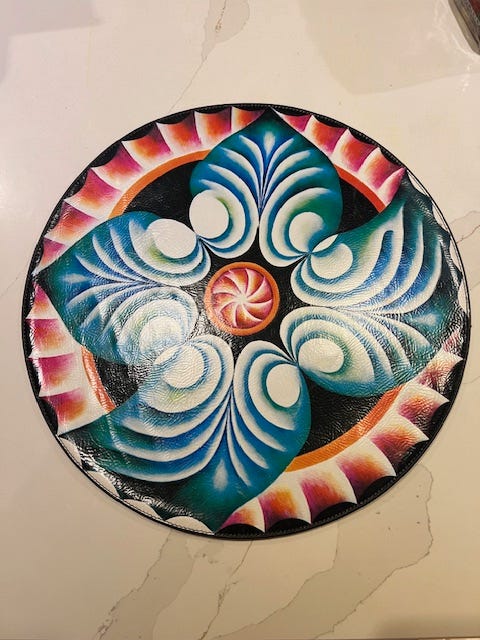


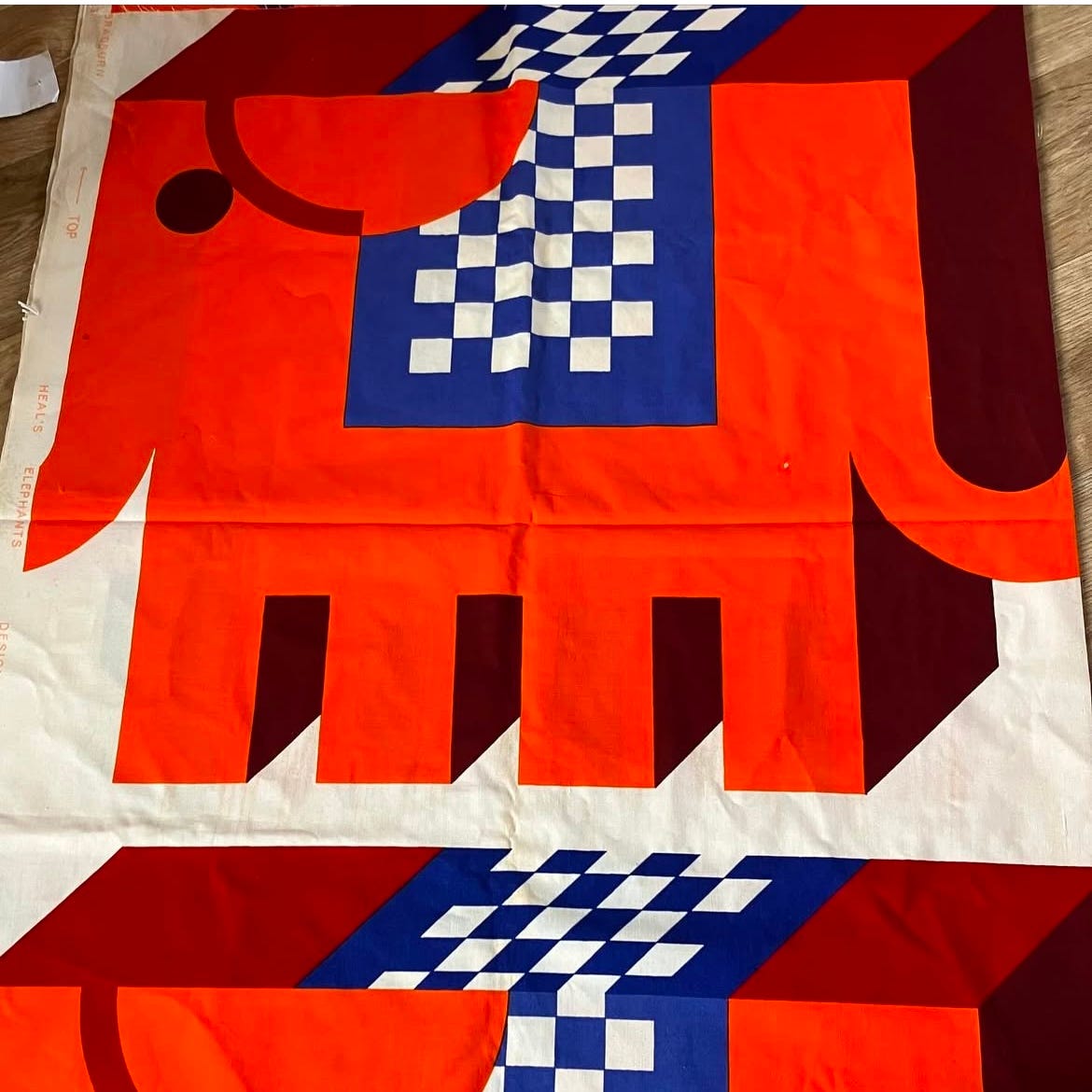
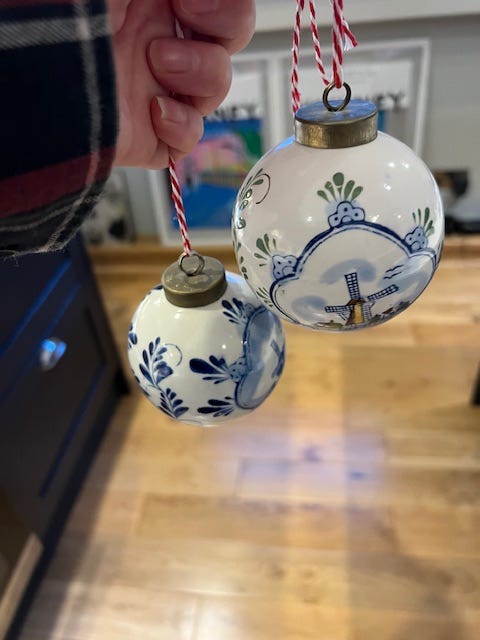
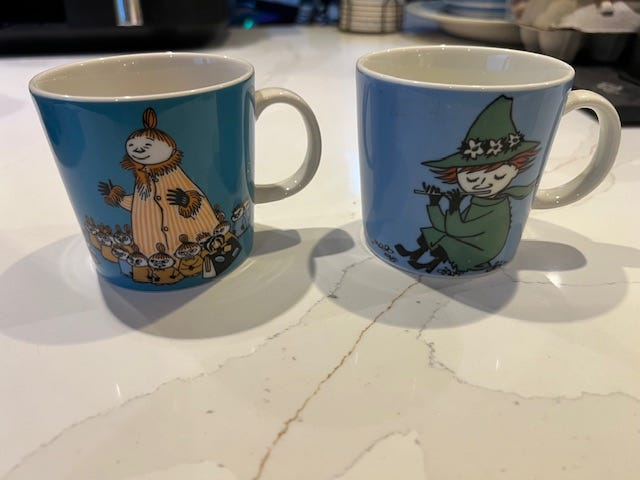
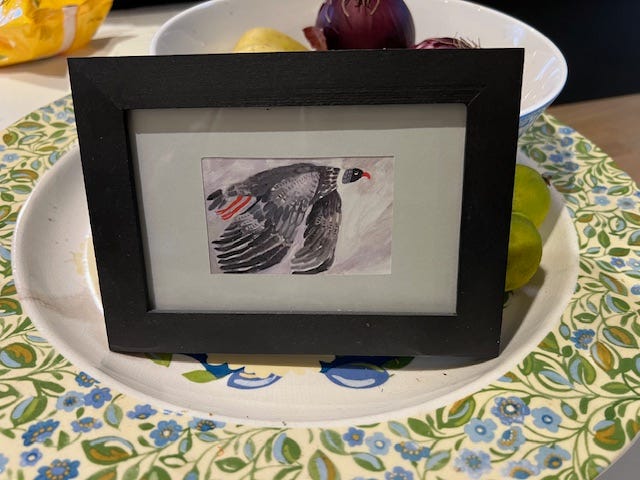
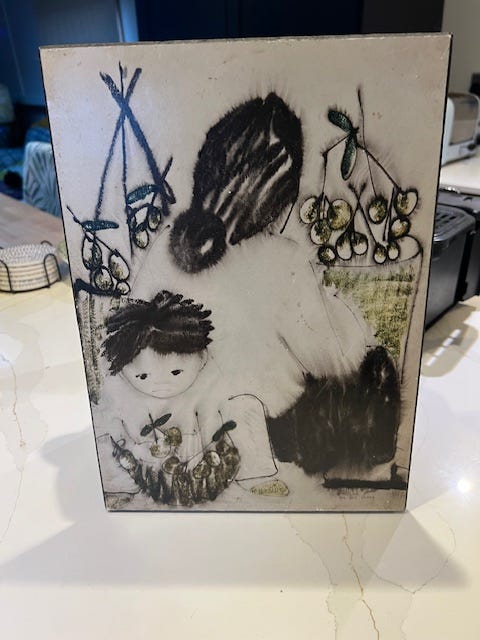
You have wonderful taste, Katy. These are all gorgeous. Lovely read, too.
I remember spotting a pair of very striking candlesticks on an antiques stall at Greenwich Market in 1985. Asked how much they were. “Two-fifty,” he said, so I was about to hand over a five pound note and he said, “No! Two hundred and fifty.” I’d never heard of Clarice Cliff! I had a good eye, though.
Couldn’t love this more! What an excellent eye you have